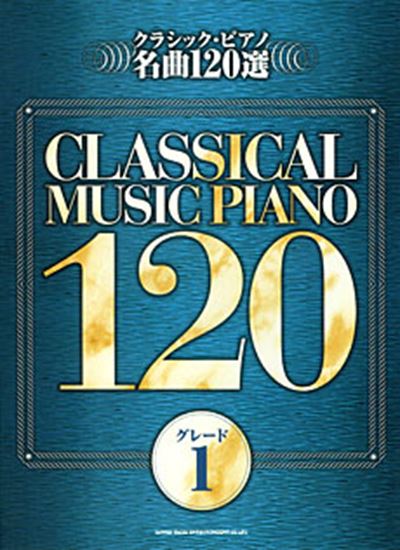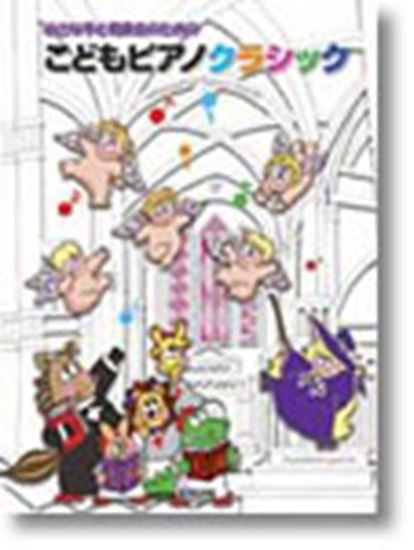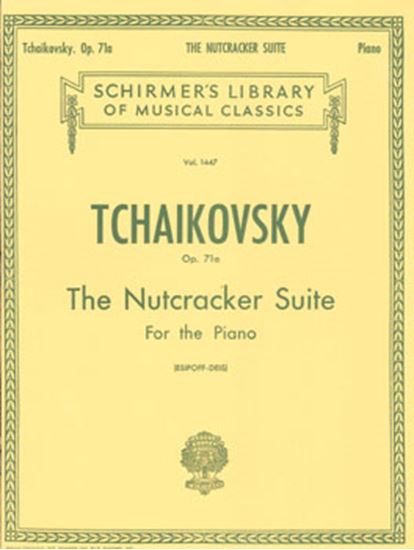Home > Tchaikovsky, Pytr Il'ich > Casse-noisette (The nutcracker) > The nutcracker suite
Tchaikovsky, Pytr Il'ich : The nutcracker suite Op.71a
Work Overview
Instrumentation:Piano Solo
Genre:suite
Total Playing Time:21 min 40 sec
Copyright:Public Domain
Original/Related Work: Tchaikovsky, Pytr Il'ich 《Casse-noisette (The nutcracker)》
Commentary (1)
Author : Kogure, Yukiko
Last Updated: January 20, 2014
[Open]
Author : Kogure, Yukiko
Along with The Sleeping Beauty and Swan Lake, this ballet, which forms the basis of the present work, is counted among Tchaikovsky's three great ballets and was the last of them to be composed, making it one of his very late works. After the success of The Sleeping Beauty in 1890, the Mariinsky Theatre commissioned him to compose the ballet music for The Nutcracker as a new work, and composition began in 1891. The discrepancy between the commissioning period and the start of composition was due to his reluctance towards this work and his complete physical and mental exhaustion. He lacked confidence in expressing the world of fairy tales, financial support from Madame von Meck had ceased, and his schedule was filled with concert offers from abroad. In this situation, what encouraged him was the detailed plan-based libretto presented by the theatre's chief choreographer, the master Marius Petipa (1818-1910), and his encounter with the celesta, a new instrument Tchaikovsky had not yet used.
In March 1892, while composing the ballet The Nutcracker, Tchaikovsky suddenly received a request from the Russian Musical Society for a concert featuring new works. However, having no works ready for performance, he reluctantly selected eight pieces from the ballet he was composing, which became this suite. Furthermore, a piano arrangement of this suite was created by Tchaikovsky himself. When performing this work, it is advisable to refer to which instruments play the melodies in the orchestral version and to imagine the timbres while playing.
Explanations of Each Piece
1. Miniature Overture Allegro giusto B-flat major 4/4 time
Appropriate for the opening of a children's fairy tale, it primarily uses the middle register and above. It is a relatively short overture.
The first theme, appearing at the beginning of the piece in the violins, is full of staccato notes and leaps, seemingly depicting innocent children frolicking. The second theme begins at measure 45. The piece is structured by the repetition of these two themes and is written in compound binary form (or sonata form without a development section). The constant alternation of multiple themes can be said to depict the whimsical actions and psychology of children.
2. March Tempo di marcia viva G major 4/4 time
This piece is used in Act 1 of the ballet, at the beginning, during the scene where children receive presents under the Christmas tree. After a fanfare, a melody imitating the lively movements of children with a bouncing motif is played by the right hand. In the orchestral version, this theme is played by the violins. The melody, starting on an anacrusis, seems to depict the impatience of children eager for presents.
3. Dance of the Sugar Plum Fairy Andante ma non troppo E minor 2/4 time
This piece is the second variation in the Pas de Deux used towards the end of Act 2 of the ballet, but it appears as the third piece in the suite. It is a solo dance for the Sugar Plum Fairy, the queen of the Land of Sweets. In Japan, it is translated as 'Dance of the Konpeitō Fairy,' but it originally refers to dragée, a confection of fruit coated in sugar.
The theme in the right-hand part of this piece was played by the celesta in the orchestral version. The celesta is, so to speak, a keyboard Glockenspiel, similar in shape to an upright piano. Its greatest charm is its very soft sound, as the hammers that strike the metal plates are wrapped in felt. It is noted in his letters that when Tchaikovsky saw the celesta in Paris, he was so captivated by its timbre that he swore those around him to secrecy about its existence, eager to incorporate it into the orchestra before any other Russian composer. The left-hand part is played pizzicato by the string instruments in the orchestral version.
4. Trepak Tempo di Trepak, molto vivace G major 2/4 time
A Russian dance. Pieces 4-7 of the suite consist of character dances performed by fairies symbolizing various sweets and beverages from different countries, set in the party scene in the Land of Sweets, welcoming the protagonist Clara. The Russian Dance symbolizes the Barley Sugar Fairy (a twisted candy with a simple taste), but due to the unfamiliarity of the confection, it is more commonly known by the dance name 'Trepak' rather than this designation.
Trepak is a peasant dance from Russia (particularly the Ukrainian region), and its vigorous character is consistently depicted.
5. Arabian Dance Commodo G minor 3/8 time
This dance symbolizes the Coffee Fairy and is based on a Georgian lullaby. (Coffee originated in the Arabian region and spread among Muslims as a medicine to improve health and elevate mood.)
The dominant figure in the left hand imitates a drum. The theme begins at measure 14, originally played by the violins. In the orchestral version, the string section plays with mutes, adding a change in timbre. Tchaikovsky attempts to represent an oriental image using typical techniques such as melismatic rhythms expressed in quintuplets, the use of augmented intervals, and a low ostinato.
6. Chinese Dance Allegro moderato B-flat major 4/4 time
This dance symbolizes the Tea Fairy. It is a comical and charming piece danced by jumping and hopping fairies.
The simple left-hand accompaniment is originally played by bassoons and double basses. The right-hand theme, which rushes upwards in septuplets, is played by flutes and piccolos. The eighth-note sections appearing between themes are violin pizzicatos. The piece is constructed through the repetition of these elements, employing a very simple compositional style.
7. Dance of the Reed Flutes Andantino D major 2/4 time
A French dance. This piece depicts almond-paste shepherds dancing while playing toy flutes called mirlitons. This piece is often called 'Dance of the Reed Flutes' after the instrument.
It begins with a pastoral melody played by three flutes (right hand in the piano version) over a pizzicato accompaniment by low string instruments (left hand in the piano version). In the middle section, a theme primarily played by brass instruments appears.
8. Waltz of the Flowers D major 3/4 time
The finale. A waltz danced by 24 attendants of the Sugar Plum Fairy. In the orchestral version, the ornamentation weaving through the main melody becomes increasingly elaborate towards the latter half. Unfortunately, the piano arrangement simplifies the orchestral version, and these ornaments are omitted due to the exigencies of piano writing. However, towards the latter half, the harmonies become richer, and a musical expansion is observed, forming a climax befitting a finale.
Movements (8)
Arrangements & Related Works(1) <Show>
PTNA & Partner Channel Videos(3items)
Sheet MusicView More
Scores List (90)
![双頭の鷲の旗の下に[やさしいピアノ・ソロ]世界のマ-チ2 - 楽譜表紙画像](https://ptna-assets.s3.ap-northeast-1.amazonaws.com/enc/books/129.jpg)
ハンナ(ショパン)

(株)シンコーミュージックエンタテイメント

(株)全音楽譜出版社

(株)全音楽譜出版社

(株)ヤマハミュージックエンタテインメントホールディングス

芸術現代

(株)全音楽譜出版社

KMP(ケイ・エム・ピー) ケイエムピー

(株)サーベル社

(株)ドレミ楽譜出版社

(株)全音楽譜出版社(ポケットスコア)

ミュージックランド

(株)シンコーミュージックエンタテイメント

(株)シンコーミュージックエンタテイメント

(株)リットーミュージック

KMP(ケイ・エム・ピー) ケイエムピー

KMP(ケイ・エム・ピー) ケイエムピー

ミュージックランド

(株)ドレミ楽譜出版社

KMP(ケイ・エム・ピー) ケイエムピー

ミュージックランド

(株)リットーミュージック

(株)共同音楽出版社

KMP(ケイ・エム・ピー) ケイエムピー

(株)オンキョウパブリッシュ〇

(株)シンコーミュージックエンタテイメント

(株)ヤマハミュージックエンタテインメントホールディングス

ミュージックランド

(株)ヤマハミュージックエンタテインメントホールディングス

ミュージックランド

(株)リットーミュージック

(株)リットーミュージック

(株)ドレミ楽譜出版社

(株)ヤマハミュージックエンタテインメントホールディングス

(株)ヤマハミュージックエンタテインメントホールディングス

(株)オンキョウパブリッシュ〇

ハンナ(ショパン)

ミュージックランド

(株)ドレミ楽譜出版社

(株)シンコーミュージックエンタテイメント

(株)ヤマハミュージックメディア

(株)シンコーミュージックエンタテイメント

(株)シンコーミュージックエンタテイメント

(株)ヤマハミュージックエンタテインメントホールディングス

(株)ヤマハミュージックエンタテインメントホールディングス

(株)シンコーミュージックエンタテイメント

(株)ヤマハミュージックエンタテインメントホールディングス

(株)ヤマハミュージックエンタテインメントホールディングス

(株)シンコーミュージックエンタテイメント

KMP(ケイ・エム・ピー) ケイエムピー

ハンナ(ショパン)

(株)ヤマハミュージックエンタテインメントホールディングス

(株)ヤマハミュージックエンタテインメントホールディングス

(株)ドレミ楽譜出版社

(株)ドレミ楽譜出版社

(株)シンコーミュージックエンタテイメント

(株)シンコーミュージックエンタテイメント

(株)シンコーミュージックエンタテイメント

(株)ヤマハミュージックエンタテインメントホールディングス

(株)ドレミ楽譜出版社

ハンナ(ショパン)

ハンナ(ショパン)

(株)共同音楽出版社

ミュージックランド

(株)タイムリーミュージック

(株)ヤマハミュージックメディア

カワイ出版

(株)ドレミ楽譜出版社

(株)シンコーミュージックエンタテイメント

(株)ドレミ楽譜出版社

(株)シンコーミュージックエンタテイメント

(株)シンコーミュージックエンタテイメント

(株)自由現代社

(株)ヤマハミュージックエンタテインメントホールディングス

ミュージックランド

KMP(ケイ・エム・ピー) ケイエムピー

(株)ヤマハミュージックエンタテインメントホールディングス

シャーマー社

(株)東音企画(バスティン)

G. SCHIRMER, Inc.

Musikverlag Doblinger

Musikverlag Doblinger

Musikverlag Doblinger

Musikverlag Doblinger

Musikverlag Doblinger

Musikverlag Doblinger

Musikverlag Doblinger






